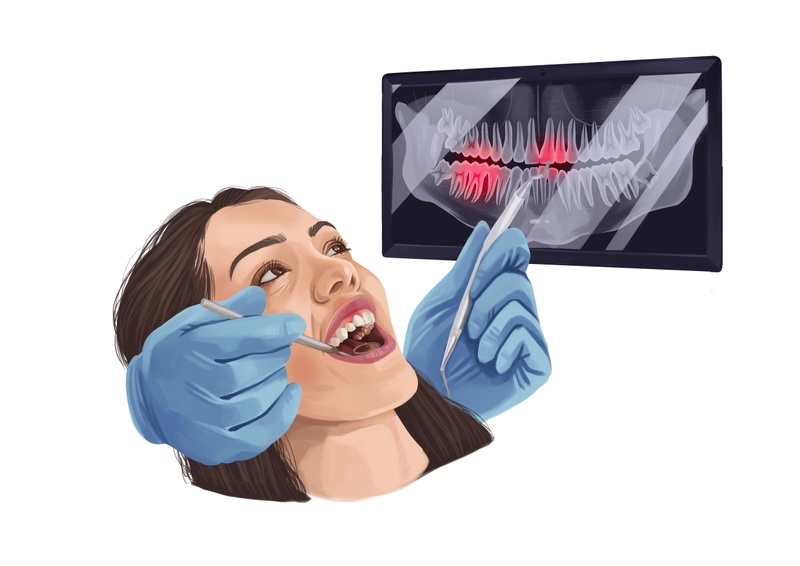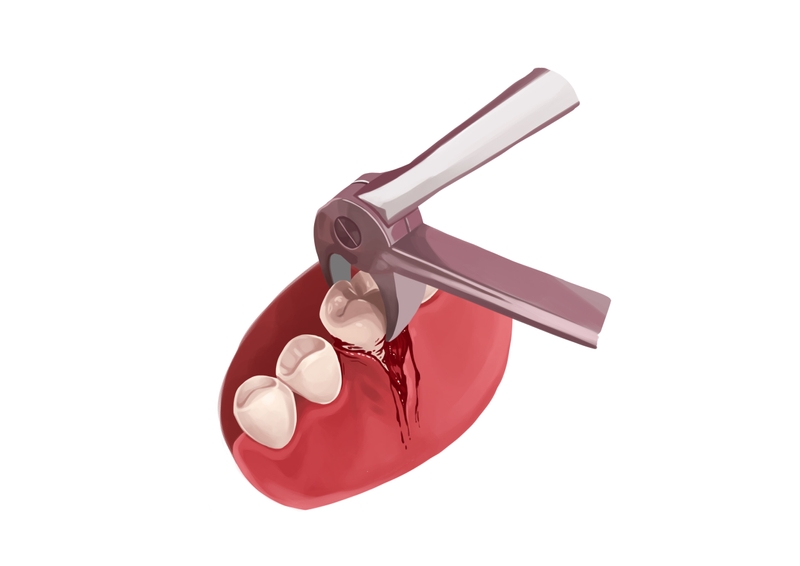- Dentists try to save natural teeth with fillings, endodontic treatments, or dental crowns. Tooth extraction is performed only when other options are impossible.
- Teeth may need to be extracted due to trauma, neglect, infection, overcrowding, or impaction. There are two types of tooth extraction: simple and surgical.
- Complications of tooth extraction include nerve damage, infection, and dry socket.
Don't let dental emergencies ruin your day. Use Authority Dental to book an appointment for emergency tooth extraction near you. We're open 24 hours a day. Get in touch now.
Are you worried you may need tooth extraction? Here's everything you need to know.
Reasons for tooth extraction

Picture by Authority Dental under CC 2.0 license
Before removing a tooth, dentists always try fillings, endodontic treatment, or partial restoration such as dental crowns. Extraction is performed when all this fails. The most common reasons for removing teeth include:
trauma,
a neglected or dead tooth,
infection or risk of infection,
overcrowding, and
impaction.
Teeth that have suffered trauma or are infected may need emergency removal. Overcrowded teeth are often extracted before orthodontic treatment is started. When it comes to impaction, left untreated, these teeth can lead to infections and severe pain.
Types of tooth extraction

Picture by Authority Dental under CC 2.0 license
Extractions are an integral part of dentistry. At times, teeth may be relatively simple to remove, but oral surgery may be inevitable. Have a look at how extractions are categorized.
Simple tooth extraction
Simple extraction mainly concerns dentition that has broken through the gums. This means:
whole or intact teeth that are visible in the mouth,
dead teeth, and
baby teeth.
Baby teeth are relatively simple to remove. Pediatric dentists do this when the growth of permanent teeth in children does not synchronize with the shedding of primary teeth. The body might try to absorb it back. That can be dangerous, and those baby teeth have to be pulled.
If the patient has severe dental anxiety, sedation, most commonly laughing gas, can be administered before the tooth extraction procedure. Otherwise, a local anesthetic will be used to numb your mouth.
During a follow-up visit, the dentist will check healing and remove sutures if necessary.
Surgical tooth extraction
Some teeth have to be extracted surgically. This type of tooth removal involves cutting and lifting mucosal tissue (a part of your gum). The tooth might need to be cut into smaller pieces. This way, the opening does not have to be as big, and healing is faster.
A surgical procedure is often necessary when teeth are impacted or broken. The first mainly concerns wisdom teeth. If not removed, this could lead to possible infection or crowding (not enough space in the mouth for all your teeth).
A local anesthetic is sometimes enough. For partially or fully bony impactions, you might need to be sedated. Some family dentists refuse to undertake such cases. You then need to see an oral surgeon.
A coronectomy is performed when there is a risk of hurting the inferior dental nerve. Such damage, if not permanent, can result in weeks of numbness in the tongue, lower lip, chin, teeth, and gums. Talking and eating are then very difficult.
After a surgical extraction, the site is most commonly sutured with self-dissolving sutures. You will get a gauze pad to bite down on to control the bleeding. It is a good idea to schedule a follow-up appointment to make sure the extraction site is healing properly.
Lee explains: "The distinction between a surgical and straightforward extraction usually comes down to accessibility. If I can see the tooth, it is a standard pull; if it is impacted under bone, like many wisdom teeth, it is a surgical job. Research indicates that roughly 85% of people will eventually need their third molars removed to prevent overcrowding or infection."
"Ignoring an impacted tooth is risky, as it can easily damage the roots of adjacent healthy teeth or lead to painful cysts," he warns.
What are tooth extraction complications?
Complications arise when you do not follow your dentist's instructions closely. Sometimes they happen simply because you are unlucky. Either way, you should be aware of the signs of a problem, namely nerve damage, infection, and dry socket.
If tooth extraction pain lasts for longer than 3 days or if you lose the sense of touch or taste, you could be at risk of nerve damage. Contact your dentist as soon as possible. Preventive antibiotics are controversial, but they remain a popular option for preventing infections.
If a patient who recently had a tooth removed uses straws or brushes the surgical area aggressively, the blood clot can become dislodged. Professional treatment is not necessary; a new blood clot should form. Nonetheless, it is very uncomfortable.

FAQ
How long does tooth extraction take?
The whole thing usually takes about an hour. You may have to take an oral sedative or be hooked up to an IV sedation for 60 minutes before the procedure starts. Higher forms of sedation also mean you might feel drowsy the next day.
Harry Lee, DMD
I often tell my patients that an extraction is the only dental procedure we cannot truly "undo." While modern implants are excellent, nothing perfectly mimics the biological shock-absorption of your own tooth's ligament. My colleagues and I often discuss how the rise in adult extractions is frequently tied to late-stage periodontal disease—a condition the CDC estimates affects nearly 47% of adults over 30. We only recommend removal when a tooth is so structurally compromised by decay or a vertical fracture that it becomes a liability to your systemic health.